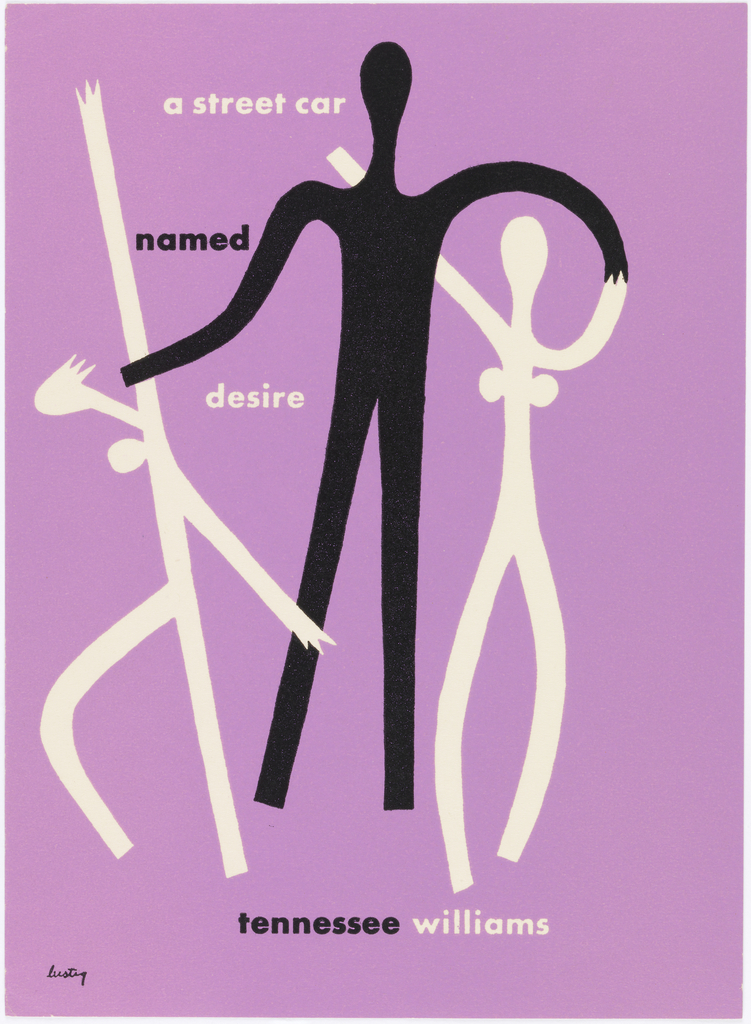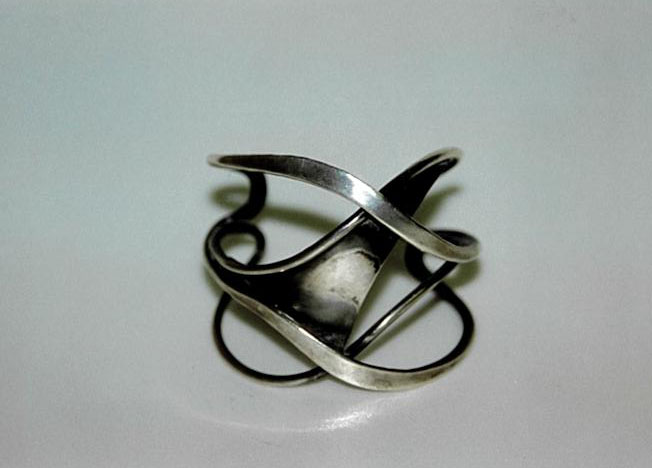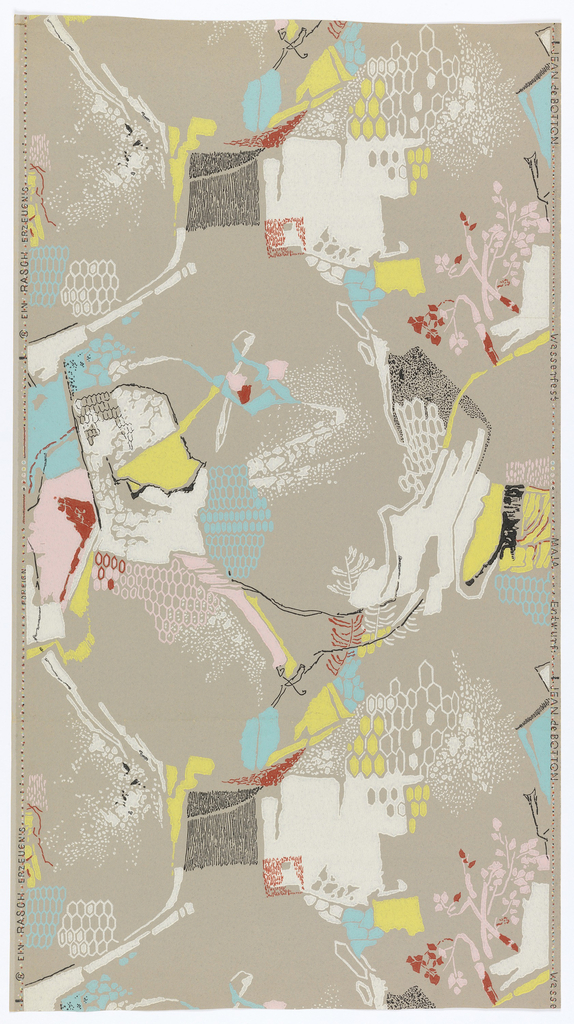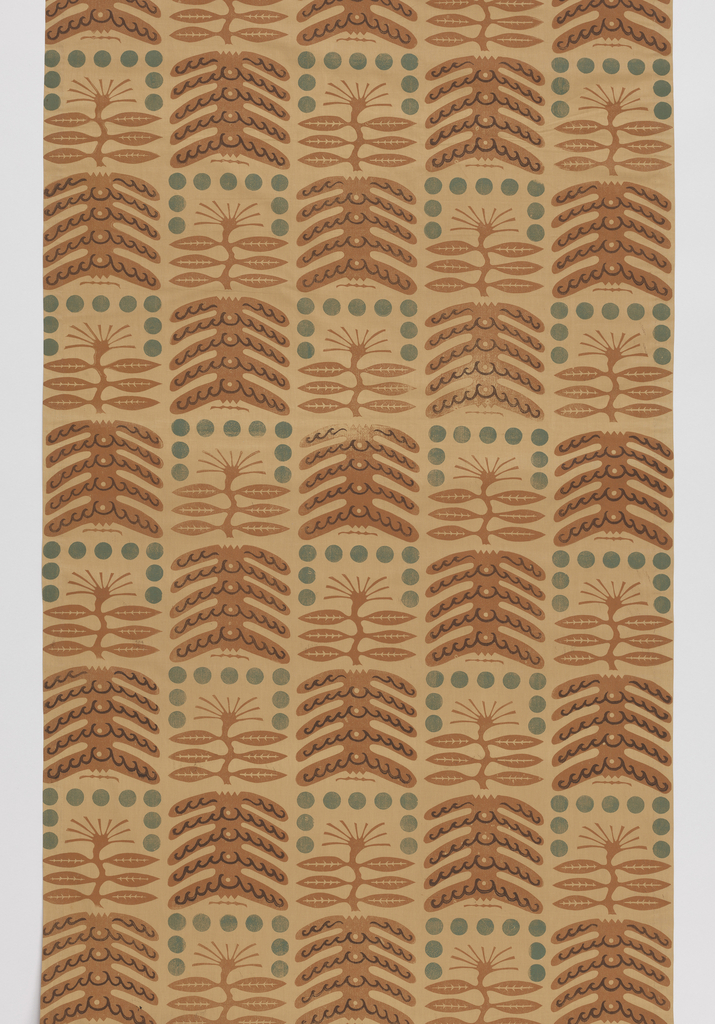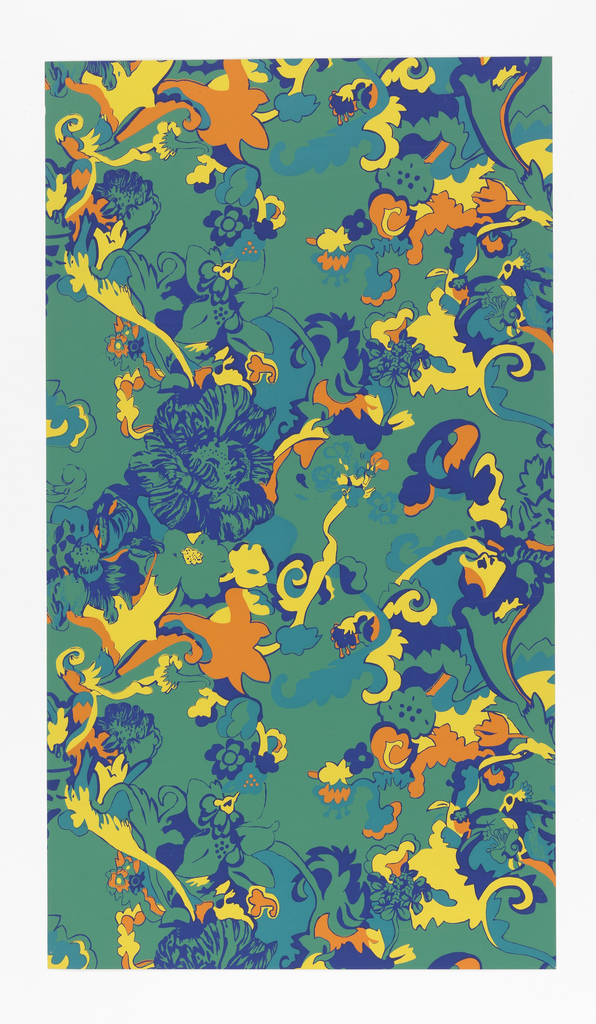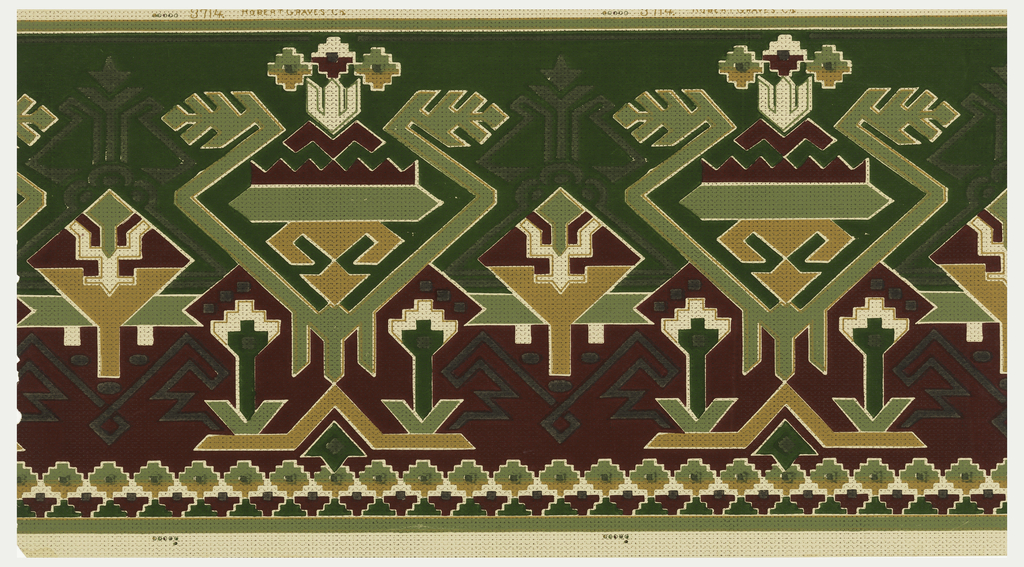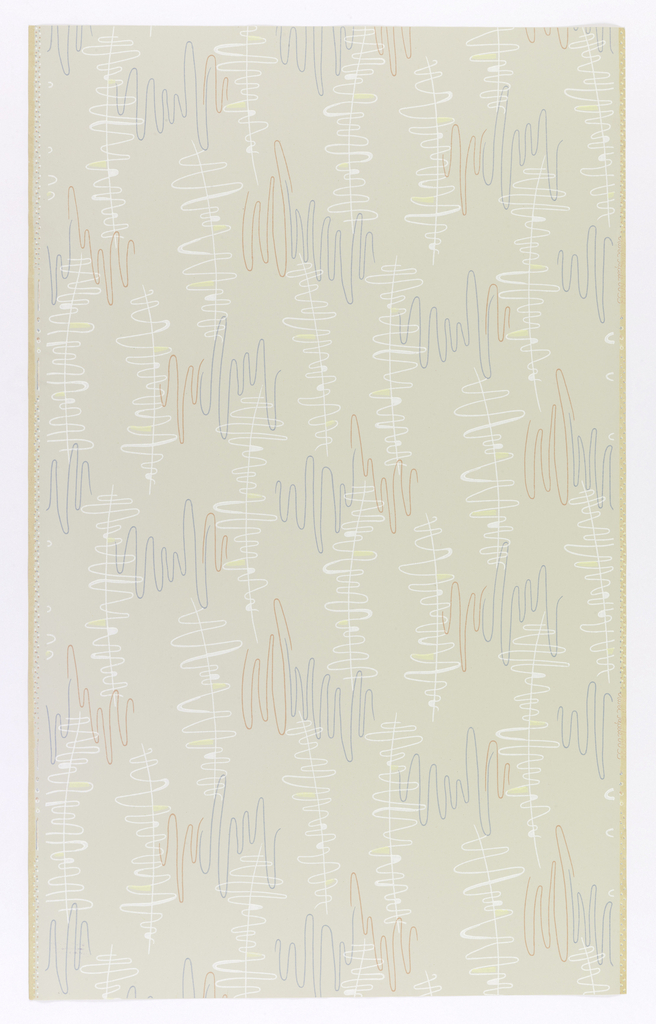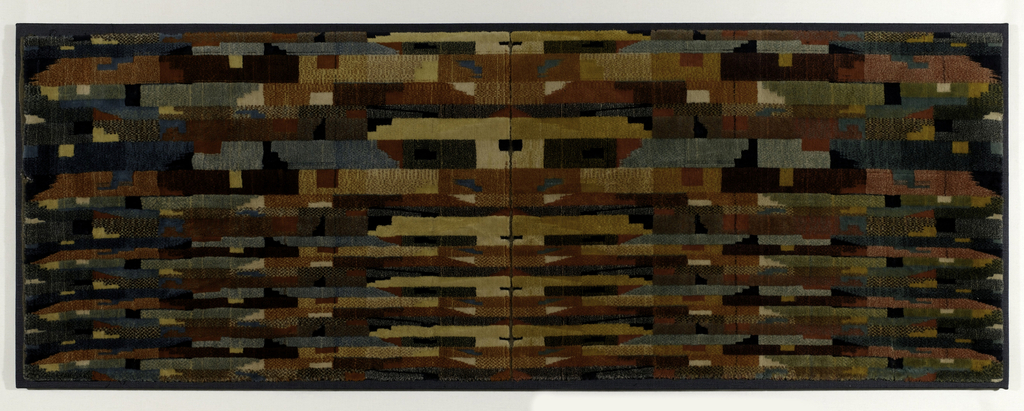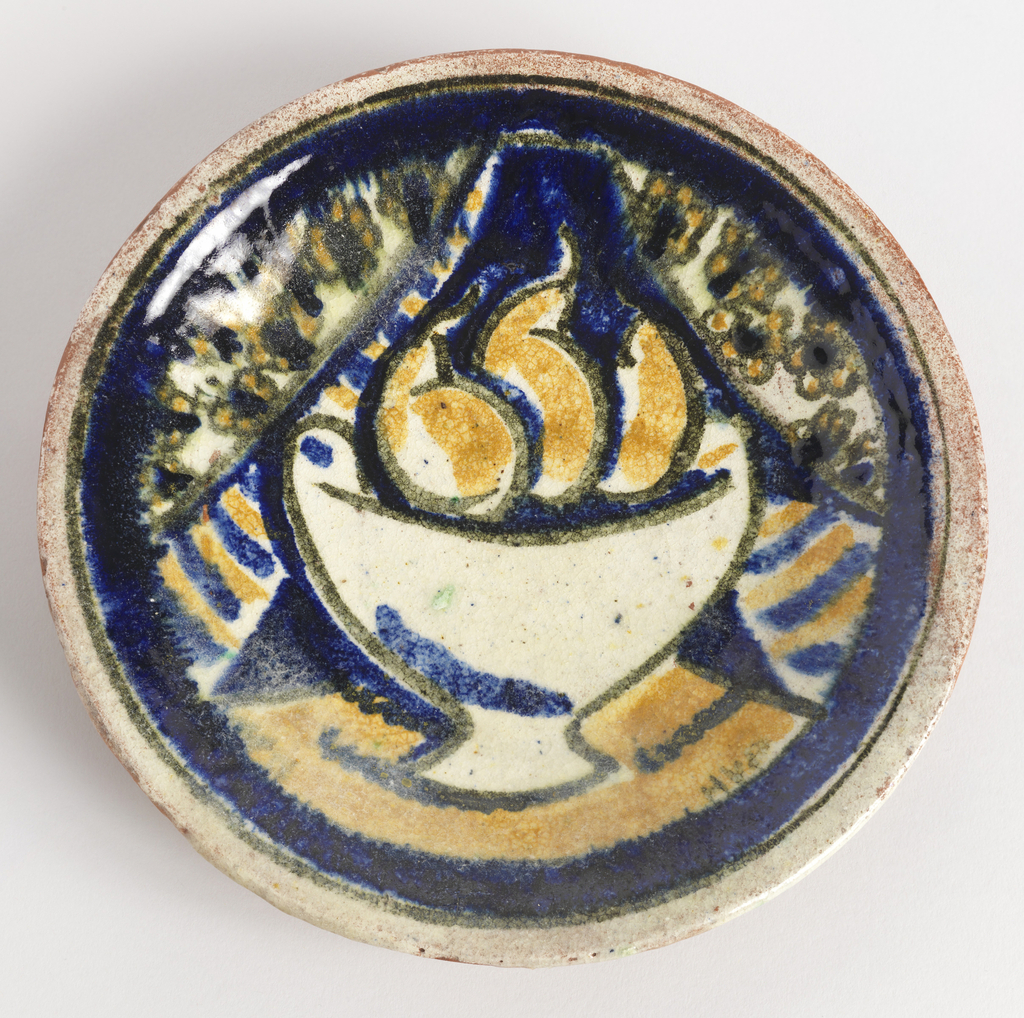In celebration of World Pride, June Object of the Day posts highlight LGBTQ+ designers and design in the collection. Today’s blog post was originally published on May 22nd, 2016. Alvin Lustig designed numerous book covers for New Directions Publishing over the course of his prolific career, including several for Tennessee Williams’s plays. Lustig’s modernist designs,...
From the archives, an Object of the Day post on the jewelry of Art Smith, one of the designers featured in Jewelry of Ideas.
Maja is a mid-century paper produced by a German manufacturer, designed by an American artist born in Greece but active in France and the USA. This is one of three papers in the museum collection by Jean de Botton, and while all his wallpaper designs are rather abstract this is the only one with no...
The Milwaukee Handicraft Project’s block printing unit developed as an off-shoot of the bookbinding unit, when the designers there decided to decorate their book covers with linoleum block prints. This quickly evolved into the creation of printed yardage. Barbara Warren was among the graduates of the Milwaukee Teacher’s College art department who served as designer/supervisor,...
On this sidewall, strange enormous flowers drawn in blue are scattered on a green ground. Their tortuous curling stems are highlighted in bright orange and yellow. It is these bright highlights that catch our eyes first, so that our first thought is that what we are seeing is a purely abstract paper of swirling forms....
This frieze by the New York-based Robert Graves Co. is an excellent example of the use of Native American motifs in American design at the turn of the century. Though this was an age that saw an unprecedented suppression of native culture, Native American art itself saw an unprecedented wave of appreciation and praise, particularly...
The Cooper Hewitt has over 50 wallpapers by the little-known German company Hosel Tapeten. Centered in the town of Hosel, situated partway between Düsseldorf and Essen in the northwest of the country, the company’s output was very typical of post-World War II German papers. The period saw an increase in the amount of cheap, mass-produced...
This modernist velour furnishing fabric designed in 1934 was produced in an area of northern France where weaving centers like Lille, Roubaix, and Tourcoing manufactured fabrics for use on airplanes, trains, and boats. During this era, escalating industrialization facilitated mass transportation, which led to an increased emphasis on travel. This cultural shift not only introduced...
Upon his return from military service in Europe in 1919, Henry Varnum Poor settled in an artists’ community in New City, New York where he purchased land and began single-handedly building a home called Crow House, named after the local birds who kept him company while he worked. As a struggling painter Poor was always...
